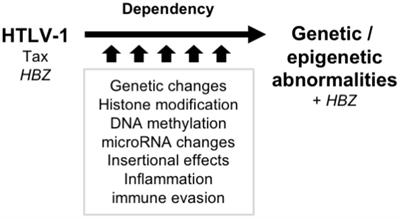EDITORIAL
Published on 12 Dec 2018
Editorial: Molecular Pathology of HTLV-1
doi 10.3389/fmicb.2018.03069
- 1,886 views
- 6 citations
31k
Total downloads
162k
Total views and downloads
EDITORIAL
Published on 12 Dec 2018
ORIGINAL RESEARCH
Published on 25 Jul 2018

REVIEW
Published on 24 Jul 2018

ORIGINAL RESEARCH
Published on 13 Jun 2018

ORIGINAL RESEARCH
Published on 22 May 2018

ORIGINAL RESEARCH
Published on 18 May 2018

MINI REVIEW
Published on 09 May 2018

ORIGINAL RESEARCH
Published on 04 May 2018

REVIEW
Published on 28 Mar 2018

REVIEW
Published on 20 Mar 2018

MINI REVIEW
Published on 19 Mar 2018

ORIGINAL RESEARCH
Published on 13 Mar 2018
